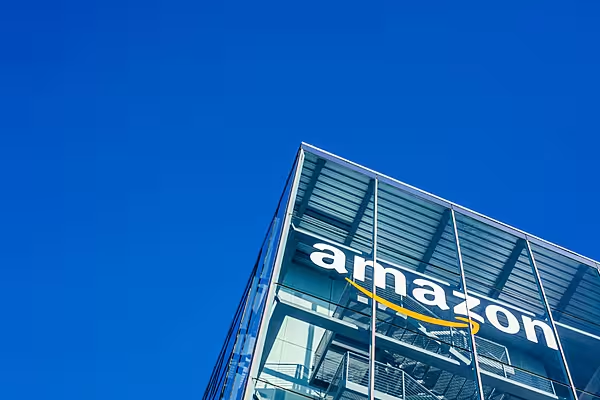Amazon investors are looking for updates on the tech giant's cloud business, ad revenue growth and signals on consumer health heading into the holidays as inflation continues to impact spending for corporations and consumers.
Investors want to know how Amazon Web Services (AWS), the company's cloud provider, stands up against Microsoft and Google which both on Tuesday reported slowed growth in their cloud businesses in the quarter ending in 30 June.
Amazon previously said it is seeing a decrease in growth in AWS as business clients reallocated their spending to reduce costs.
"There is potential for cloud computing, including Microsoft's Azure, Google Cloud and AWS, to materially benefit from companies interested in artificial intelligence," said Tom Forte, a senior research analyst at financial firm D.A. Davidson Companies.
However, as consumers overall pullback on spending, companies invested in AI and cloud tools are forced to reconsider their expenses, which will influence cloud computing growth, Forte said.
Amazon chief financial officer Brian Olsavsky said during its first-quarter call in April that he expects the tech and retail giant's cloud business to slow as its enterprise clients became more "cautious in their spending."
Investors are also looking to see how Amazon's advertising business intersects with more language models and generative AI.
'Robust Growth'
The company's advertising business was seeing "robust growth" due to its machine learning investment, chief executive Andy Jassy said in the first-quarter earnings call.
Investors will also compare Amazon's ad business with Google, which on Tuesday reported a 3.3% increase in advertising revenue to $58.1 billion despite a broader advertising pullback.
Ad sales for Google's YouTube video service unit rose 4.4% to $7.67 billion compared to last year.
Net sales of Amazon's advertising business in the first quarter were $9.51 billion.
Investors expect the company's advertising segment will increase to $10.3 billion in the second-quarter, according to estimates from Refinitiv.
On the retail front, Amazon investors want to know how the company will keep consumers shopping on its site as discretionary spending decelerates with US retail sales seeing a nominal increase 0.2% in June.
Investors are looking for Amazon's game plan to improve its e-commerce business profitability for rest of the year.
Prime Day sales, which took place 11-12 July, will not be included in Amazon's results for its second quarter, which ended 30 June.
The retail giant hit record sales on the first half of its two-day Prime event and plans to host another fall Prime event.
More Third-Party Sellers
Amazon's profit margin was 46.77% in the first-quarter.
Analysts expect its margins to reach 46.53%, according to Refinitiv.
"The big focus point will be on improving profitability and the hope is that e-commerce margins will improve year-over-year and quarter-over-quarter," said Arun Sundaram, vice president of equity research at CFRA.
Since the first-quarter, Singapore-based Shein and China's Temu launched marketplace models in the United States in an effort to compete for Amazon's shoppers and vendors.
Ad Business
Amazon is increasing the number of third-party sellers on its platform, which has helped the retailer's ad business.
Vendors can purchase ad space in search results and use other tools to catch customers' attention in an ocean of products.
"The number of third party sellers selling on Amazon is increasing and if that continues, more of them will likely advertise on Amazon," Sundaram said.
Amazon's first-quarter operating income was $4.77 billion a 74.4%% increase from $2.74 billion in the fourth-quarter and a 30.1% increase from last year.
Read More: Amazon Dangles Deeper 'Prime Day' Discounts For Stressed US Shoppers
News by Reuters, edited by Donna Ahern, Checkout. For more technology stories, click here. Click subscribe to sign up for the Checkout print edition.








